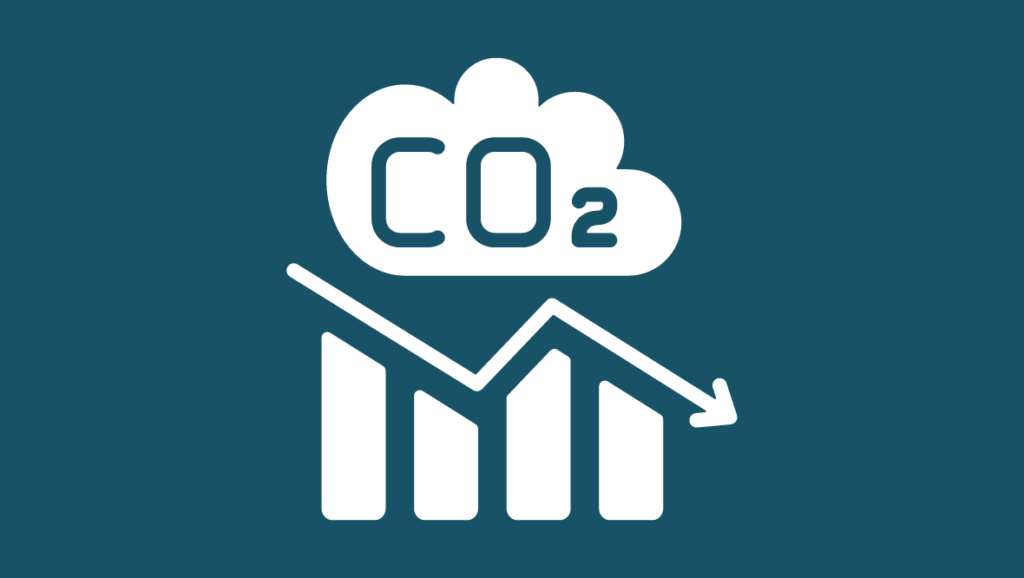5 Reasons Why Companies Disclose Their Carbon Footprint

Explore the reasons driving companies to disclose their carbon footprint. Understand the significance of transparency in GHG Emissions reporting.
According to Carbon Emissions Survey Report 2023 published by BCG+CO2 AI, as of 2023, 10 % of companies surveyed are comprehensively measuring (Scope 1, 2, and 3 emissions) their GHG emissions. This is up from 9% in 2021.
Alongside broader reasons such as countering climate change and reducing environmental impact, companies report GHG emissions for various other reasons as well. Regardless of the drivers, calculating and reporting carbon footprint is becoming increasingly significant for any modern business. Businesses adopting emission calculations exhibit responsibility and future-proof themselves against evolving norms.
In this article, we unpack into the compelling reasons motivating businesses to practice GHG emissions disclosure. We’ll explore how this practice not only fosters environmental responsibility and risk management, but also unlocks the potential for enhanced reputation, improved efficiency, and even a competitive edge.
Reason # 1. Navigating Regulatory Landscapes through Disclosure
As countries across the world strive to achieve net-zero emissions, industries responsible for most greenhouse gas emissions will face stricter regulations. These regulations will focus on calculating, reporting, and ultimately reducing their emissions.
Here’s a breakdown of this trend:
- New regulations are emerging: The European Union’s Corporate Sustainability Reporting Directive (CSRD) and the United States’ Task Force on Climate-Related Financial Disclosures (TCFD) are examples of these stricter rules. Similar regulations are being enacted globally.
- Focus starts with larger companies: Currently, these regulations primarily apply to larger and/or listed organizations. However, due to their significant contribution to emissions (e.g., 63% of CO2 emissions by companies in the EU come from SMEs), smaller and medium-sized enterprises (SMEs) can expect similar regulations in the future.
This trend highlights the growing importance of transparency and accountability in a world increasingly focused on sustainable practices. Businesses, both large and small, need to prepare for a future where emissions disclosure and reduction become a central element of their operations.

Reason #2. Driving Sustainability and Managing Risk
A detailed report outlining every source of greenhouse gas emissions your business generates, both within your operations and along the value chain. This is the essence of an emissions inventory, a crucial tool for measuring your environmental impact.
By providing a clear picture of your emissions footprint, based on accurate data, an emissions inventory empowers you in two key ways:
- Crafting Effective Reduction Strategies: With a comprehensive understanding of where your emissions originate, you can develop targeted strategies to reduce them. This could involve optimizing energy usage, switching to renewable resources, or investing in sustainable practices throughout your supply chain.
- Mitigating Future Risks: As the world prioritizes sustainability, being labeled as an emissions-heavy entity carries growing risks. These could include regulatory pressure, financial penalties, or difficulties attracting investors and customers. By proactively managing your emissions through comprehensive measurement, you can reduce these risks and position your business for future success.
Net zero (e.g. net zero emissions or net zero economy) refers to achieving a balance between emissions going into and out of the atmosphere. A credible net zero target requires a reduction in Scope 1, 2 and 3 GHG emissions, consistent with reaching net zero emissions no later than 2050. Any residual emissions that cannot be eliminated need to be offset using natural carbon sinks (e.g. trees, the ocean and soil) or man-made carbon removal methods (e.g. carbon capture and storage). It is important to note that net zero emissions cannot be achieved by offsetting emissions but require steep reductions in carbon emissions.
Greenhouse gas accounting and reporting for the private equity sector, Principles for Responsible Investment (PRI)

Reason #3. Transparency, Stakeholders, and the Competitive Advantage
Disclosing greenhouse gas emissions isn’t just about taking stock; it’s also about communicating openly with your stakeholders. This transparency serves two key purposes:
- Building Trust: Stakeholders, including investors, customers, and employees, increasingly value companies committed to sustainability. By disclosing your emissions, you demonstrate transparency and accountability, fostering trust and building stronger relationships with these key groups.
- Gaining a Competitive Advantage: Today’s consumers and investors are increasingly conscious of environmental impact. By proactively managing and disclosing your emissions, you can position your business as a leader in sustainability, potentially attracting new customers and investors who prioritize ESG (environmental, social, and governance) factors.

Reason #4. Drive Innovation and Efficiency
Disclosing your emissions might seem like an act of vulnerability, but the truth is, that it can unlock various innovation and efficiency opportunities. Here’s how:
- Data-Driven Insights: An emissions inventory provides a detailed breakdown of your emissions sources. This granular data allows you to identify areas of inefficiency where you can potentially make significant reductions.
- Sparking Innovation: Knowing where your emissions come from provides a starting point to find solutions. Businesses are constantly innovating—developing new technologies, processes, and materials—specifically aimed at reducing their environmental impact. By disclosing, you join this innovative ecosystem, potentially leading to breakthrough solutions that benefit both your bottom line and the planet.
- Optimizing Operations: Often, emissions reductions go hand-in-hand with increased efficiency. For example, optimizing energy usage in your facilities can lead to both lower emissions and lower energy bills. Disclosure encourages a continuous improvement mindset, where you constantly seek ways to operate more efficiently and sustainably.

Reason #5. The Future-Proofing Benefits of Disclosure
As each year gets progressively hotter and extreme weather events become more frequent the world is slowly coming to grips with the urgency of the climate crisis. And this urgency isn’t limited to environmental concerns; it is playing out as radical shifts in consumer preferences, investor expectations, and government regulations. Businesses, just like individuals, need to adapt quickly to thrive in this new landscape.
At the heart of this change is the focus on greenhouse gas (GHG) emissions. Understanding, disclosing, and ultimately reducing your emissions is about:
- Future-Proofing Your Business: Companies that ignore their environmental impact risk losing customers, investors, and even the ability to operate under evolving regulations. By taking emissions seriously, you demonstrate a commitment to adapting and remaining competitive.
- Becoming a Responsible Player: The future belongs to businesses that embrace sustainability. By taking action on emissions, you signal that your company is proactively working as part of the solution.


